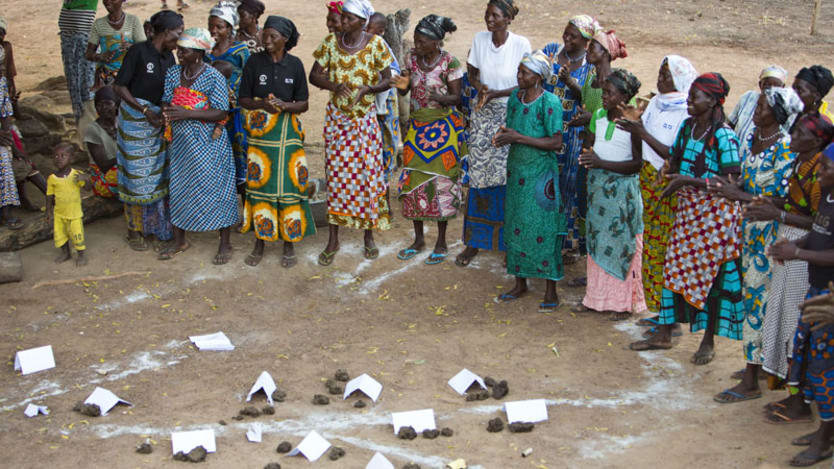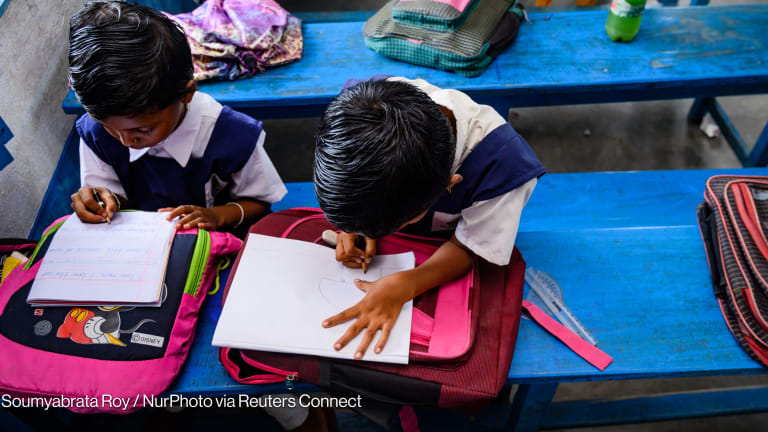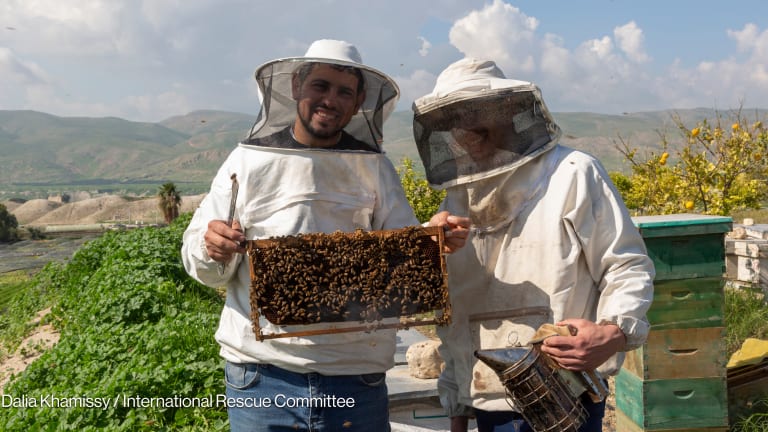
If you invest even a little bit of your time in keeping on top of developments in the water, sanitation and hygiene sector, you will have seen at least some of the blogs, reports and articles reminding us all that the world failed to attain the Millennium Development Goals’ sanitation targets — by a wide margin.
The Sustainable Development Goals give us a second chance to get it right, but they seriously up the ante. Instead of “merely” providing half of the unserved population with access to improved sanitation, as the MDGs required, the SDGs tell us we can only declare success once every person, every school and every health facility has — and uses — safely managed sanitation facilities.
We have 15 years to get it right. Given the below-average results we obtained in the past 15 years, it is clear that we should ask some hard questions and examine the evidence emerging from the field, in the hope we can do much better in the next 15 years.
Pilots never fail, and never scale
Anywhere in the world, if we look hard enough, we can find successful, innovative projects changing people’s lives for the better — and not only in sanitation; this is true for every sector.
The assumption that successful pilots will — by some unexamined magic — lead to sustained scale up efforts is mostly false and, as a result, we seem stuck with repeated small-scale successes, rather than impact at scale. In the past I have labeled this observation “Rosenboom’s law on pilots:” Pilots never fail, and never scale.
Intuitively, this makes some sense. For pilot (or demonstration) projects, we select the most responsive communities, with the most supportive leadership. We use the best front line workers we can find, and there is frequent follow up from the (international) organization supporting the pilot. This is a recipe for success.
Making the transition from pilot to scale, however, changes everything. This requires political buy-in first of all, supplemented by — often limited — program funds. Limited budgets, front line workers with less training and experience, less follow-up, average motivation and support: over time, the conditions for success move from “outstanding” to “average,” and so do the results.
Successfully working at scale means planning for scale from the beginning and understanding better “what works” in program design and implementation. Some of the investments of the Bill & Melinda Gates Foundation’s WASH team set out to learn how this could be done.
Scaling up CLTS
For the past five years, Plan International has been working on a project called “Testing CLTS Approaches for Scalability,” meant to examine how the use of local actors could be used to more successfully (and more cheaply) scale Community-Led Total Sanitation interventions. In Ghana, this was done by using natural leaders to follow up at community level, while in Ethiopia school teachers were used to trigger communities. In each country, the intervention (“modified” CLTS) was compared with results from implementation as usual (“standard” CLTS), so that clear conclusions could be drawn about the causes of differences in outcomes.

Besides the project-specific country research results (many of which are available on the project website), we have additional information from CLTS case studies from seven countries, published in the CLTS Learning Series.
Meaningfully summarizing the findings here would make this blog much longer than I’d want it to be and, in any case, you can find them online. Instead, I will discuss some general observations, show that these are not unique to the Plan project, and consider some implications for programming and policy:
Observation 1: Mileage varies
Results are usually reported as averages, and it is very easy to forget that averages can hide important differences. In Ghana, for example, the use of natural leaders led to a 22 percentage point increase of sanitation coverage on average, when compared to “standard” CLTS. That’s a great result, but the average masks the fact that actual results ranged from an 11 percentage point increase in one area to a 47 point increase in another.
In Ethiopia, the average increase in coverage in the intervention area was 7 percent, but this masked a range of minus 5 percent to plus 14 percent. Also, the results in the control area were better, on average, than those in the intervention area, something we would not have known without carefully measuring the difference between “standard” and “modified” implementation.
Observation 2: One size does not fit all
There is not one approach that works best in all situations. The reasons why people behave a certain way vary, and the approaches used to change behavior should be based on an understanding of those reasons. The results mentioned above demonstrate this to some degree, and the Learning Series report supports this also: “CLTS was widely perceived as being universally applicable … even though outcomes varied depending on community characteristics. Rather than viewing it as a comprehensive solution … CLTS should be considered as one component of a sanitation strategy.”
While few people will argue with the fact that one size does not fit all, too often governments or implementers act as if one approach actually should fit all situations, sometimes going so far as prescribing its use through national policy.
Research from other countries and other organizations shows similar variations based on context, ranging from UNICEF in Mali reporting very positive CLTS outcomes (in terms of access, use and even stunting of children), to IPA in Bangladesh reporting mediocre results from CLTS (or sanitation marketing) alone, but much better results from CLTS combined with a subsidy. Recent research in India shows enduring issues with the use of sanitation facilities, and mixed results in terms of an increase in coverage.
Observation 3: Many countries are unprepared for scale
The CLTS Learning Series includes a comparative analysis of CLTS implementation in seven countries in Africa and Asia. Results support my opening observation: very few (if any) projects are planned with scale in mind, and many rely on an international organization to develop local capacity, support implementation, monitor results, etc.
While local support can go hand in hand with attaining scale (as it does in Bangladesh, where BRAC supports rural WASH), the observation that “in five of the seven case studies, local government capacity was found to be insufficient to lead CLTS activities” does not inspire confidence for the era of the SDGs. Issues across demand, supply and the enabling environment stand in the way of scale and sustained progress.
So what does this mean?
First, a project that aims to change behavior should be designed on the basis of knowledge about those drivers in the local context. Government offices or organizations supporting sanitation activities at the local level are likely to be important sources of information in the project design phase.
Also, comparing trends in sanitation access and use prior to and after an intervention can provide important information about the additive effect of the intervention, making it easier to judge the value for money provided by the selected approach.
Finally, flexible, guiding sanitation policies are likely to be more appropriate than fixed prescriptive policies. A national sanitation policy requiring that programs identify and address constraints on the demand and supply side would leave more room for effective program design than a national policy requiring the use of CLTS, for example, or a national policy prescribing the use of subsidies for toilet construction. Government investment in effective knowledge exchange and outcome monitoring are likely to be more useful in supporting the design of effective programs than prescriptions about specific approaches used throughout the country.
I would argue that no WASH practitioner reading this should be surprised by my observations. Acting on them is conceptually simple, even if it may be harder in practice.
Join the Devex community and access more in-depth analysis, breaking news and business advice — and a host of other services — on international development, humanitarian aid and global health.








